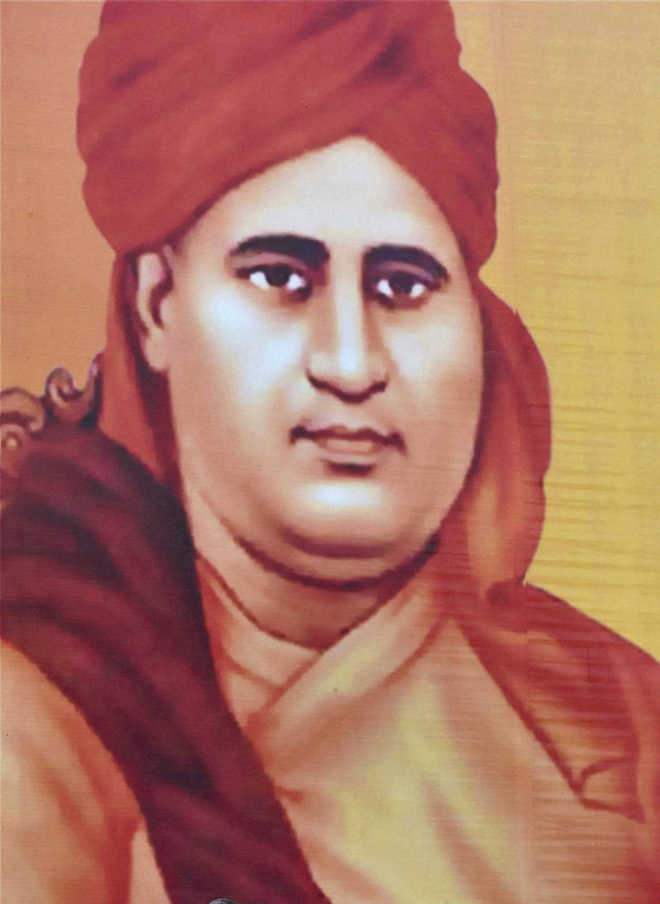Dr Satish K Kapoor
At the Kumbha fair, Haridwar in 1867, Maharishi Dayananda Saraswati installed the pakhanda khandana pataka — ‘hypocrisy-denouncing flag’ - to challenge the forces of orthodoxy. Eight years later, he established the Arya Samaj in Bombay, to concretize the Vedic ideal that truth is the greatest dharma.
Maharishi Dayananda assigned to the Vedas the authority which the Christians accord to the Bible, Muslims to the Quran and Parsees to the Avesta. He held that the revealed knowledge of the Vedas is the common heritage of mankind. He was convinced that the Vedas hold the key to the wellbeing of humanity. Being a profound scholar of Sanskrit, he presented a novel interpretation of the Vedas based on the Vedic Nighantu and the Nirukta of Acharya Yaska. He held that the proof of the Vedas being revealed by God is that they are in consonance with the laws of nature unlike some other scriptures which seem to defy logic. He refuted the charge that the Vedas sanctioned polytheistic beliefs and argued in the Satyartha Prakasha that the seemingly different gods mentioned in the Rigveda represent different aspects of the Supreme. He regarded the monosyllable Aum as the most sacred name of God, and cited verse after verse from the sacred literature to prove the same. He provided a comprehensive meaning of the concept of yajna by describing it as a process of spiritualizing human activities and of inculcating the values of service and sacrifice in one and all, for bringing about harmony at all levels of existence.
Max Muller, the renowned German Indologist, who described the Vedas as ‘pastoral songs of a barbaric people’ in 1873, changed his opinion five years later after going through Maharishi Dayananda’s Rigvedadibhashya-bhumika, Introduction to the Study of Rigveda.
As reformer, Maharishi Dayananda denounced image-worship, non-vedic cults, meaningless rituals, animal sacrifice, extravagance in religious and social ceremonies, and the rigours of caste. He clearly laid down that varna vyavastha ought to depend on guna (quality), karma (action) and svabhava (temperament) of a person, and not on his birth.
Maharishi Dayananda envisaged the creation of a society which would provide equal opportunities to all, irrespective of their caste, creed or sect, and give due regard to women. He was opposed to the custom of purdah (parda) and made a forceful plea for the education of women. In reply to the question, ‘Should women and shudras study the Vedas, he quoted verse 2 of the 26th chapter of the Yajurveda, as also the Shrauta Sutra which says: Imam mantram patni pathet i.e. ‘Let the wife read this mantra in the yajna’. If women were not taught the scriptures including the Vedas, how they would read the mantras with proper accents on the occasion of yajna, he asked.
Swami Dayananda opposed child marriage but unlike Raja Ram Mohan Roy, refused to sanction the remarriage of widows. He opposed the custom which stopped the natives from going across the country. He cited the record of Indians who pursued trade and even empire-building abroad in hoary times, and took the priests to task for nurturing superstitions.
Swami Dayananda felt that education must be made compulsory for all so that it can root out ignorance, promote a spirit of enquiry and inculcate national feeling. He pioneered the idea of swadeshi much before the historically popular Swadeshi movement in Bengal in 1905. His exhortation that good government is no substitute for self government preceded any such national call and prepared the ground for political resurgence.
(Dr Satish K Kapoor is a noted author, historian and spiritualist based in Jalandhar city)
Unlock Exclusive Insights with The Tribune Premium
Take your experience further with Premium access.
Thought-provoking Opinions, Expert Analysis, In-depth Insights and other Member Only Benefits
Already a Member? Sign In Now










